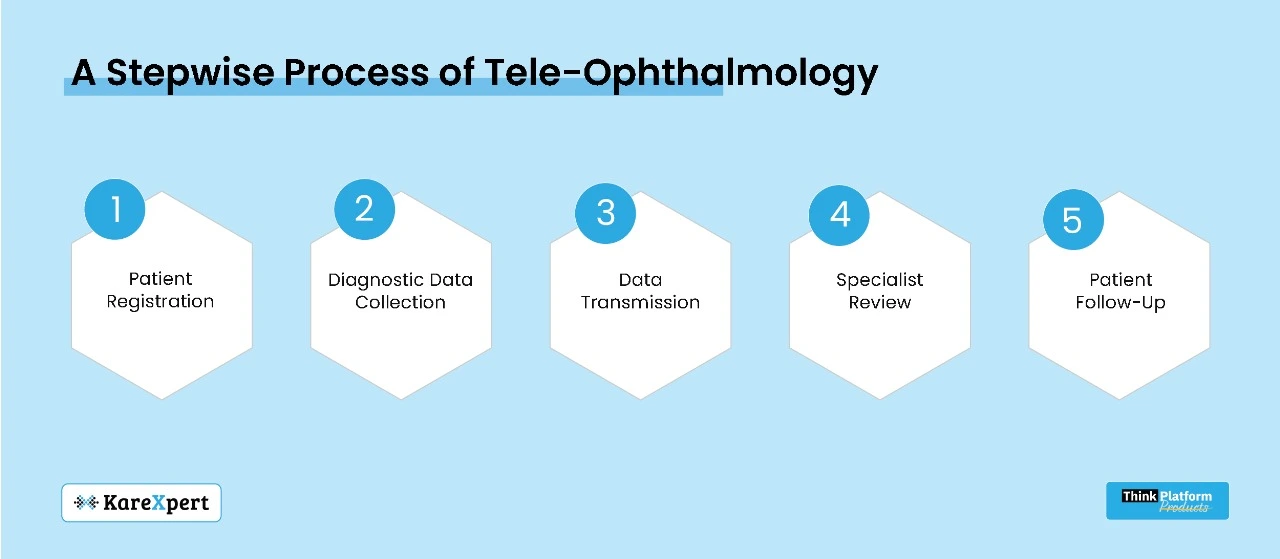Tele-Ophthalmology: Reimagining Rural Eye Care with Virtual Vision Care

Introduction: Bridging Gaps in Eye Care
Individuals in rural communities frequently encounter barriers to access for specialized healthcare services, including eye care. Limited resources, lack of infrastructure, and geographical barriers have traditionally hindered early diagnosis and management of eye conditions. Cue tele-ophthalmology, an innovative approach that employs the use of digital technology to provide quality eye care to even the remotest regions. The solution not only bridges this gap but also reimagines rural eye health with accessibility, affordability, and efficiency.
The Problem: A Harsh Reality for Rural Communities
1. Lack of Specialized Care
Ophthalmologists tend to be concentrated in urban centers, with rural areas typically underserved. Many patients must travel far for such consultations, contributing to delays in diagnosis and treatment.
2. Economic and Material Barriers
Travel expenses, missed work, and other logistical obstacles keep rural people from obtaining timely eye services. For many, it is an all too real choice between life and health.
3. Growing Prevalence of Eye Problems
Rural populations are increasingly affected by conditions such as cataracts, glaucoma, diabetic retinopathy, and age-related macular degeneration. Left untreated, these can result in permanent blindness.
A Game-Changer: Tele-Ophthalmology
Tele-ophthalmology encompasses telemedicine and specialty eye care that supports real-time or asynchronous communication between patients and specialists (ophthalmologists). Through internet-connected devices and portable diagnostic tools, it is transforming eye health in rural areas.
1. Breaking Geographical Barriers
Tele-ophthalmology eliminates the need for physical presence. Today, a patient in a remote area can communicate with a specialist in an urban center without traveling, leading to timely diagnosis and treatment.
2. Cost-Effective and Scalable
Tele-ophthalmology, utilizing existing digital infrastructure, reduces costs relative to traditional healthcare delivery models. It is also a scalable solution for resource-limited settings when coupled with portable diagnostic devices and cloud-based platforms.
3. Prevention through Early Intervention
Early detection of eye disease is possible with regular tele-screenings. Diabetic patients, for instance, can undergo routine fundus photography to screen for retinopathy before it develops.
A Stepwise Process of Tele-Ophthalmology

1. Patient Registration
Patients are registered at a primary health center (PHC), local clinic, or via a mobile app. Basic demographic and medical history information is collected.
2. Diagnostic Data Collection
Diagnostic images and data are obtained using portable devices, such as fundus cameras, slit lamps, and optical coherence tomography (OCT) machines.
3. Data Transmission
This data is then sent to a centralized server or directly to a doctor via cloud-based platforms.
4. Specialist Review
The data is reviewed by ophthalmologists, who arrive at a diagnosis and prescribe a treatment plan.
5. Patient Follow-Up
Patients receive their diagnosis and treatment plans through the same platform, along with follow-up schedules and alerts.
Real-World Impact: Success Stories
1. Vision Centers in India
In India, tele-ophthalmology programs, such as those run by Aravind Eye Care’s vision centers, have made significant inroads into rural communities. By pairing telemedicine with local health workers, they’ve offered consultations, screenings, and even pre-operative evaluations remotely.
2. Remote Diabetic Retinopathy Screening in Africa
Tele-ophthalmology programs in Kenya have also been effective in screening diabetic patients for retinopathy. By implementing portable fundus cameras and cloud-based reporting, they’ve shifted the burden of undiagnosed cases and prevented vision loss.
Advantages of Tele-Ophthalmology
1. Enhanced Accessibility
Tele-ophthalmology ensures that patients from rural areas can receive quality eye care without traveling. This is especially useful for the elderly and disabled.
2. Reduced Costs
Patients save money on travel expenses, and healthcare organizations can operate more cost-effectively by reducing the need for physical facilities and staff in every location.
3. Improved Patient Outcomes
Early detection and timely intervention result in better health outcomes and a lower incidence of preventable blindness.
4. Strengthened Public Health Systems
Tele-ophthalmology can be embedded into public health activities, helping in mass screenings and data collection for policy formulation.
Challenges and Solutions
1. Technological Barriers
Challenge: Limited internet connectivity and lack of digital literacy in rural areas.
Solution: Implement offline-friendly apps and run digital literacy drives.
2. Data Security and Privacy
Challenge: Ensuring secure transmission of sensitive patient data.
Solution: Use robust encryption protocols and comply with data protection regulations.
3. Specialist Availability
Challenge: Limited availability of ophthalmologists to review cases.
Solution: Use artificial intelligence (AI) to pre-screen cases and prioritize urgent ones for human review.
The Role of Technology: Fueling Innovation
1. Artificial Intelligence (AI)
AI-powered tools can analyze diagnostic images, detect abnormalities, and prioritize cases, reducing the workload on specialists.
2. Portable Devices
Handheld fundus cameras and portable slit lamps are examples of diagnostic tools that can be used on-site for screening in rural environments.
3. Cloud-Based Platforms
Cloud technology enables universal data sharing, remote access, and expansion of tele-ophthalmology programs.
Future Prospects
1. Integrating with Public Health Programs
Tele-ophthalmology can be incorporated into national health programs to manage the increasing burden of ocular diseases systematically.
2. Expansion to Home-Based Care
Patients could one day conduct basic eye screenings at home and send data straight to specialists with advances in wearable technology.
3. Improved Training for Local Health Workers
The reach of tele-ophthalmology can be widened even more by empowering local health workers with training and tools.
Conclusion: A Visionary Approach to Rural Eye Health
Tele-ophthalmology is more than a technological improvement — it is a humanitarian achievement that brings equity into healthcare. Built on digital innovation, it closes the geographic gap between rural patients and specialized eye care, so that geography can no longer be a barrier to vision. With the advent of tele-ophthalmology, we are slowly approaching a world where every person, regardless of their location, can see the world around them with clarity.
